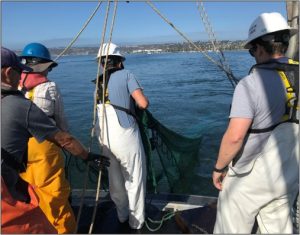Bight ’23 to feature 7 study elements probing coastal ocean health

The Southern California Bight Regional Monitoring Program has solidified plans for seven study elements for its upcoming 2023 cycle – the largest number of elements to date – reflecting the program’s commitment to probing a wide range of issues affecting the health of Southern California’s coastal ocean.
The Bight ’23 cycle, which kicks off with field sampling in July, will consist of the following study elements: Sediment Quality, Water Quality, Microbiology, Trash and Microplastics, Estuaries, Harmful Algal Blooms and Submerged Aquatic Vegetation.
Among the contaminants to be monitored during Bight ’23 will be CECs (contaminants of emerging concern) recently identified as monitoring priorities via a statewide review panel, including PFAS (per- and polyfluoroalkyl substances), tire wear compounds and microplastics.
Bight ’23 also will investigate how a range of contaminants can accumulate in bivalves, including marine and freshwater HAB toxins, pathogens, PFAS and microplastics.
More news related to: Regional Monitoring, Southern California Bight Regional Monitoring Program